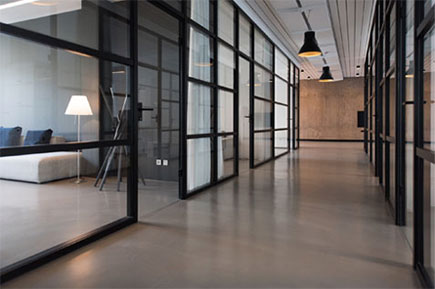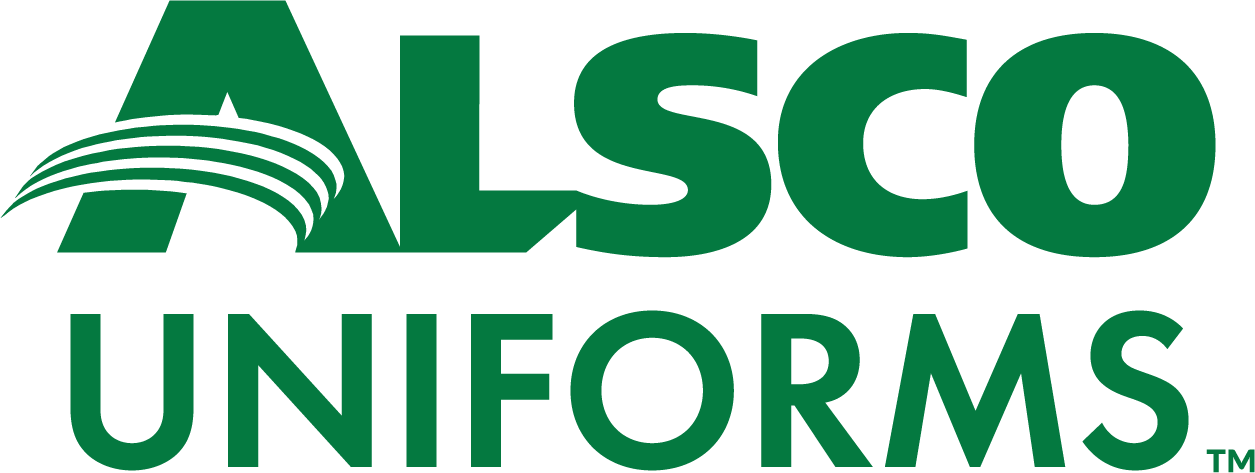
While the sight of a person slipping and falling in a movie has been making us laugh practically ever since the first comedy was created, the same scenario in real life is far from comical.
The situation becomes even more serious if you are an owner of the company in which such incident occurs.
Slipping incidents cost employers millions every year in lost production and other costs and account for over half of all reported injuries to members of the public.
This clearly shows that management of wet surfaces in your company’s building is a very important part of your overall management efforts.
Alsco is proud to be a part of the solution, with a wide selection of water absorbent floor mats, designed to be slip resistant and create safe areas to walk on.
Alsco mats can be used everywhere in the building, be it a washroom, a lobby or a hall.
The Scope Of The Problem
In truth, it’s difficult to find statistics relating specifically to washroom incidents, but there is plenty of information highlighting the significance of the broader ‘wet floor’ accident category. According to figures in Key Work Health and Safety Statistics 2014, published by Safe Work Australia, injuries caused by falls, trips and slips represented 21.4% of all serious workers compensation claims in 2011-2012.
Its prominent share of workplace injuries continues, with the Australia Bureau of Statistics (ABS) reporting that between July 2013 and June 2014, Australian workplaces registered 68,200 ‘falls on the same level’ (which includes slips and trips), or 13% of the total number of work-related injuries and illnesses over the 12-month period.
In the UK, the Health and Safety Executive (HSE) revealed that the vast majority of about 1,300 registered incidents of slips and trips in the food and drinks industry (pubs and restaurants etc) are accounted for by slips (80%), and of them 90% were caused by wet floors.
Meanwhile, the US reports 540,000 serious slip and fall injuries in the workplace on average each year, with as many as 460 workplace fatalities directly related to slips on wet floors.
The indictment of the ‘wet floor’ problem at work is pretty clear, but there is little reason for the threat to remain so high. Adequately managing wet floors in your workplace is not a very complex undertaking, and there are several steps that can be taken to greatly reduce the risk of falling on a wet floor, in washrooms, kitchens, lobbies or anywhere else.
Critical Areas
Whatever the nature of your business, slips and trips are always a risk – even in carpeted offices, staff can trip over a dog-eared carpet corner and get injured in the fall. Wet areas are usually confined to specific locations, however, and while statistics fail to identify the precise location of incidents involving wet surfaces, common knowledge tells us they are confined to 6 main areas. These are the
- front and rear entrances, where rainwater is carried in on wet shoes, clothes and umbrellas,
- canteens, where spills can occur during break and lunchtime. Also, cisterns dispensing hot or cold drinks, and refrigerated display units may leak.
- kitchens, where water, grease, oil and moist ingredients can fall to the ground. Also refrigerators and other temperature-controlled food storage units might leak.
- warehouses and workshops where machinery oils, detergents and other liquid chemicals might spill.
- lobbies and waiting rooms, again where water from outdoors can be allowed to drip
- washrooms, where splashing around sinks, overflowing toilets and leaking pipes can lead to wet areas
Of course, any areas where there is a normally smooth surface – like marble floors or ceramic tiled floors – are aesthetically impressive and easy to clean, but they become hazardous surfaces should there be spillage at all.
Steps To Prevent Accidents
As with all health and safety issues, there are several steps you can take to counter the likelihood of there being an accident. In fact, managing wet floors in washrooms, entrance lobbies and general walkways, is perhaps the most straightforward of all the safety-related tasks in any working environment.
We have put together a shortlist of the top 6 tips for managing wet floors in washrooms at work, and in that way protecting staff and visitors from the threat of slipping and suffering an injury – or worse.
Tip 1 – Block Access
The first step is to block any access to the wet area. Having one or two wet floor stands or cones cornering the area is fine, but that is not enough to ensure workmates don’t wander onto the wet surface, placing themselves are risk. This is always important, but particularly so when managing wet areas in washrooms with frequent traffic, like those in medium to large offices or where customers might visit too.
There are a few options available to you to block access, like portable plastic barriers that can be hooked together to surround the danger zone. Barriers might also have retractable canvas belts, which are ideal for blocking off large spillages, or expandable barriers with scissors-action plastic slats, which are perfect from cordoning off smaller areas.
Tip 2 – Mark The Areas Properly
The first thing you need to make sure is that wet floors are clearly marked. A “Caution – Wet Floor” sign will do the trick, you just have to take care that the sign is placed at the right spot. Ideally, it needs to warn people before they step onto the wet floor.
The signs need to be clearly visible and to stand in the way, in order to prevent people from deciding to ignore them (more on that in the next tip).
For spillages and freshly cleaned floors, you can use removable signs. However, there are areas in buildings which are permanently wet and you should consider marking them with wall signs. These areas can usually be found in toilets, around sinks, as well as in places where water condenses on windows and ceilings and drops on the floor.
It is also smart to make it a company policy that reporting on spillages is considered a priority. This way, cleaning staff will always know when they need to act and prevent unwanted incidents.
Tip 3 – Keep Cleaning Equipment Handy
Like we mentioned in the first tip, quick action on removing spillages should be considered imperative. One of the ways in which you can ensure that floor cleaning can be performed when necessary is to keep cleaning equipment close at hand.
This can be done by placing cleaning closets at strategic places around the building and making sure these closets are always properly stocked with necessary equipment. Mops and buckets, cloths for absorbing liquids – these are the essential tools for any quick spillage cleaning action.
Cleaning closets don’t have to be big – if you organize them properly, everything will fit comfortably, maybe even leaving you with enough space to store other necessary things such as Wet Floor signs.
In order to make sure closets are properly stocked, you need to have a person who will perform regular checks.
Tip 4 – Maximize Awareness
We’ve already mentioned how important it is not to keep wet areas and spillages secret, and to warn workmates to take care. But being sure that everyone is constantly aware of the risk is important too. After all, vigilance is an essential tool when it comes to staying safe and keeping standards high.
So, it’s a good idea to put up posters in areas to promote awareness of the risks, like in the canteen, on corridors and (of course) in the workplace washroom itself. There are plenty of safety at work signs to download that address this particular problem. Just be sure they are large enough to see clearly, and not a small A4-sized print out hidden behind office plants or an open boardroom door.
Tip 5 – Choose The Right Floor Mats
We have already identified toilets as the critical areas in any building where spillage can occur at any time. While keeping them spillage free with timely actions should be a priority, there are still ways to alleviate risks of dangerous falls before cleaning crew arrives.
Floor mats are an ideal solution for areas which get slippery all the time. The new technologies make floor mat materials able to soak up a lot of liquid while still providing a safe surface.
However, material is not everything. Floor mat design is also important, as it prevents the mat from sliding on the wet floor.
Consider placing a mat on every permanently or frequently wet surface. These are found not only in washrooms, but also at building entrances and other places, depending on the building in question.
Successfully managing wet areas in washrooms means finding a way to negate the risk of injury. At Alsco, we provide a variety of floor mats specifically designed to handle wet areas and reduce the risk of slipping. Depending on the nature of your work, there may be certain wet area mats needed for certain sections of the workplace. For example, there are thick mats that let liquid and debris to fall through while keeping workers above the spillage and allowing them to work on. They are popular in kitchens and workshops, but equally effective around those sink areas in workplace washrooms.
Entrance mats normally suitable for lobby areas are highly absorbent too, which can be useful if placed at the doorway into the washroom, but they can also be used around the sinks too. For more on Alsco Mats, check out our online brochure.
Tip 6 – Choose The Right Cleaning Schedule
Aside from timely reactions when a spillage occurs, it is important to impose a fix cleaning schedule which will at the same time keep the building clean and safe for workers.
General cleanings are best performed in the morning before employees come to work or after everybody has left. While the first scenario is more desireable (cleaning staff will not like it if they have to stay at work for such a long time), it requires some careful planning. If employees arrive at nine in the morning, it would be wise to perform cleaning one or even two hours earlier.
Timely cleaning will ensure that there are no wet areas left when workers arrive, which helps with general safety at work and makes cleaning itself more efficient, since dirty shoes can make quite a mess on a wet floor.
Solve The Problem With Alsco Mats
Over the years, Alsco has become a trusted name in the textile rental industry, serving a variety of industrial sectors. Through Alsco Mats, we provide floorcare solutions for every situation, making us the perfect option when it comes to managing wet areas in washrooms, kitchens, lobbies, and corridors.
And because we provide a complete mat rental service, our clients avoid the often high costs associated with purchases, maintaining and replacing floor mats in the workplace, with weekly rates starting from less than $1 a day.
Some of the key benefits of mat rental and you’ll see it makes good business sense:
- Complete managed service
- Tax deductible advantages
- Keeps floors clean and prevents floor damage
- Presents a clean image to your staff and customers
- No capital outlay
For more on how Alsco Mats can contribute to a safer workplace in an affordable and reliable way, simply visit the website. You can also check out our range of floor mats on our brochure. And if you want to speak to one of our experienced team, you can fill our online enquiry form, or call us at +6564550150.
Photo courtesy from Unsplash Images by Nastuh Abootalebi
